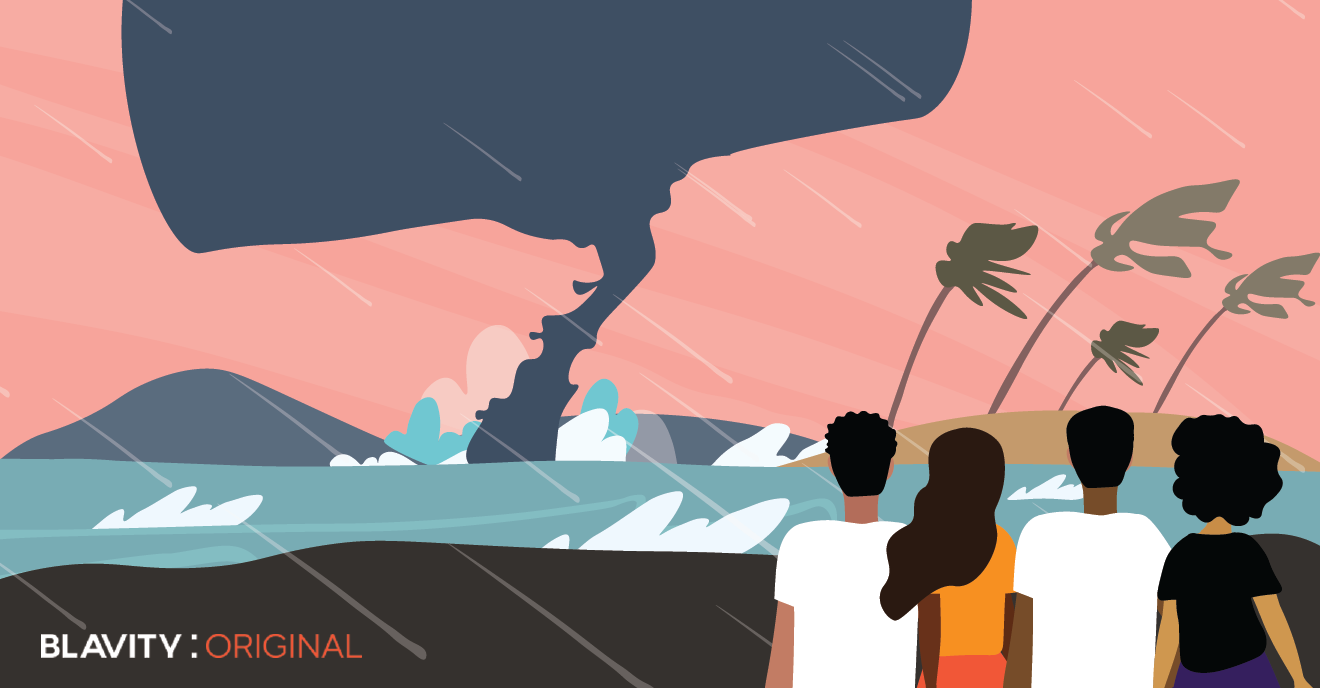In the wake of Hurricane Barry, the people of Louisiana are reminded of a harsh truth that has stuck with them since Hurricane Katrina devastated the area in 2005: Disaster relief efforts have significant unfair social and political implications for Black and poor communities.
Recently, many have taken to social media to express concerns regarding climate change, government aid and disaster relief. Clint Smith, a Ph.D. candidate studying at Harvard, articulated the severity of natural disasters for communities in Louisiana via Twitter.
The atmosphere is warming & thus holds more water, these storms are unloading larger amounts of rain, the warming of water in the Gulf of Mexico makes these systems stronger than ever, rising sea levels make the areas of flooding far more vast. This isn't in 10 yrs. This is now.
— Clint Smith (@ClintSmithIII) July 12, 2019
Every family from Louisiana has a story from Hurricane Katrina; the storm took about 2,000 lives, damaged over 200,000 homes, and displaced roughly 800,000 people. My uncle Leonard and his six children were living in a home that they had owned for about 20 years in Slidell, Louisiana. When Katrina hit in August of 2005, they lost everything. After the storm, his family moved to a northern part of the state, where they lived in a mobile home for years. This lifestyle was humbling but it was also a privilege, many people were forced out of homes and areas their families had occupied for centuries.
My grandmother’s family had bought a home in New Orleans in 1965. At this time, Black folks were just beginning to feel collective political empowerment with the passage of the Civil Rights and Voting Rights Acts of '64 and '65. Katrina destroyed the house and all of its contents. In the midst of grieving the possessions of her ancestors, which were washed away by the storm, my grandmother was left to pay thousands in demolition.
Disaster relief efforts in Louisiana have historically disenfranchised Black people.
1. Elevation In Sea Levels
The damage that was done by Hurricane Maria in Puerto Rico and Hurricane Irma in Florida is a direct result of human-induced climate change. As global temperatures increase, rainfall and wind speeds increase, as well — and the situation is only getting worse.
The upper layers of the ocean and the atmosphere are simultaneously warming at significant rates, effectively creating the perfect conditions for hurricanes and tropical storms to thrive in the North Pacific. Additionally, sea levels are rising as the ocean warms and land-based ice melts.
According to the Union of Concerned Scientists, global sea levels have risen about seven to eight inches since 1900. The elevation in sea levels proves to be critical for New Orleans, which is already five to 10 feet below sea level. Scientists have projected that hurricanes will become more intense as sea levels rise, winds strengthen, and global temperatures increase.
2. Ineffective And Outdated Flooding Technology
Flooding technology in Louisiana is not equipped to manage the imminent threat of natural disaster. The levees, which are located along the Mississippi River, are designed to withstand roughly 20 inches of water, a hydrologist from the National Weather Service reportedly told AP News.
Though Hurricane Barry showed early signs of a potential for danger as it brewed in the Gulf Coast, the storm was able to pass through the city without much devastation. The rain levels reached about 19 inches, which is just below the levee’s capacity, according to AP News.
I’m left to wonder: What will happen to New Orleans when the next climate change-aggravated hurricane sweeps through the city? What will happen when sea levels rise and New Orleans sinks deeper into the surrounding water?
3. Gentrification Throughout Lower-Income Communities
Prior to Katrina, the Lower Ninth Ward reportedly had one of the highest percentages of Black homeowners in the city, according to a 2015 article by The Guardian. Similar to that of hurricanes that have touch other low-income, majority Black and brown communities, the people of the Lower Ninth were neglected, in terms of effective rescue and relief by the U.S. government. Images of people stranded on rooftops received national attention from news outlets everywhere. Although about 14,000 people were living in the majority-Black neighborhood during 2000, by 2010 the were less than 3,000 people.
Now, white millennials and government officials have teamed up to build luxury apartments, office spaces, and bourgeois restaurants where housing projects once stood. Though the people of New Orleans have always been resilient in the face of disaster, the history and culture of lower-income communities are being washed away with each flood and hurricane. What gentrifiers see as “cheap real estate” is really the repeated displacement of African American descendants of chattel slavery
The threat of climate change is not the far-off, distant and dramatic apocalypse people think it is. It is happening now and low-income communities in Louisiana and other parts of the world are facing the brunt of its effects today. The potential threat of another hurricane looms over our heads reminds us that we are living through climate disaster now. Collective action is required today — not tomorrow, and certainly not 10 years from now.

